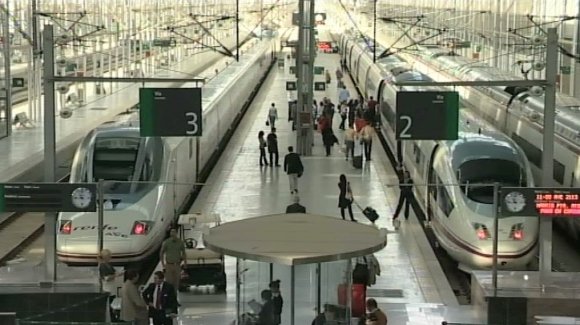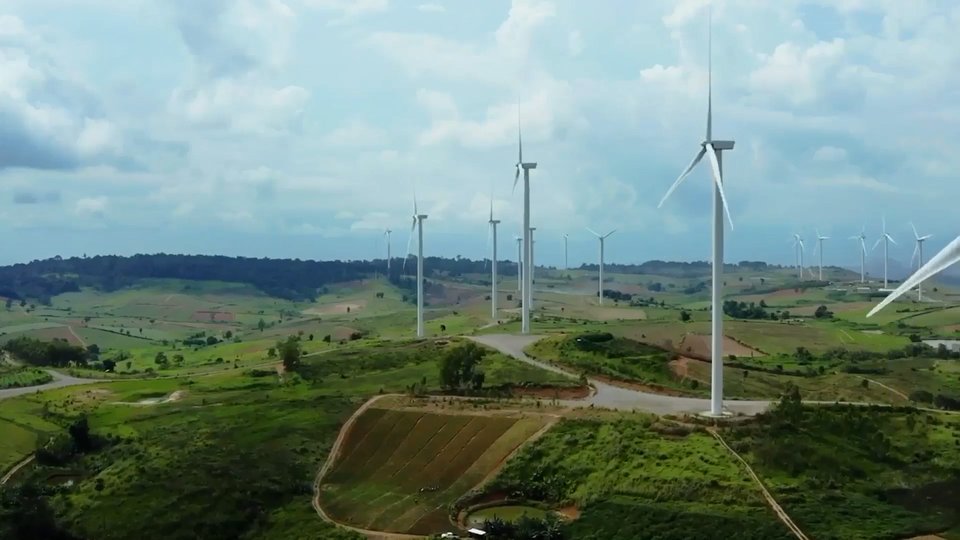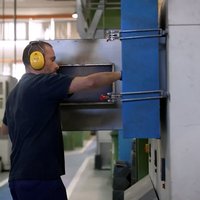Trains in motion

High-speed trains usually leave the stations punctually. This makes the trip between Cordoba and Malaga. Passengers take the place and spend 50 minutes on the train to travel the 169 kilometers that lie between the two cities. these trains can reach speeds of up to
350 kilometers per hour, but they usually do not reach this limit, and they lose speed in parts. In fact, on the catenary that feeds the trains with the force of light, every 30 kilometers, there are parts of 400 meters without tension.
If you look through the train window, you’ll see high-voltage towers and wires from time to time. It is from these threads that the light force reaches the catenary of the train, but not directly. First, the light force will pass through a substation that will modify this energy to adapt it to the required power.
The high voltage line is three-phase, i.e. it carries the voltage in three wires. On the other hand, the catenary of high-speed trains only needs two of them. At the substation, power is taken from two of the three high voltage wires to power the train chain and one is free. This creates an imbalance in the distribution network and increases online losses.
In order to overcome the imbalance, the yarns which are taken from the high tension in pairs are alternated. For example, in the first 30 kilometers the force is taken from the R and S threads, in the next from the S and T and then from the R and T. This interleaving of wires cannot be done in sequence, since voltage changes would cause a short circuit.
Assisted by Mikel Aiarzague. Pictures of Trainelec: In order to make this interleaving possible, a neutral zone is formed on one side and on the other side in the form of insulation. Neutral areas for trains are power cuts and when power is cut off from the train, it could cause incidents in the electronic components contained in the train itself and cause problems in the train. To avoid this, what is done is, the neutral zone but a kilometer before, the circuit breaker expands, that is, the train runs out of traction and continues due to its inertia, passes the neutral zone until the other side and on the other side, when the whole train has passed, 500 or 600 meters lighter, then it feeds and takes its course again. This, on the one hand, creates a slowdown in the train, i.e. if it was not going to be at the other point it could have reached more quickly, and on the other hand there is also the risk that the train will be left behind, inside the neutral zone, at a standstill.
Normally, passengers do not perceive when the train passes from the powered part to the unstressed part, but sometimes gradually the train takes a delay. The late arrival of the train to its destination will cost the operators a fortune, since they will have to pay damages.
The engineers of Trainelec and Mondragon Unibertsitatea are developing a system that will make the neutral zones of the catenary disappear and allow the train to have tension all the way.
The first tests are being carried out at the La Roda substation in Malaga.
By José María Canales; MU: This device that we have in this container is made of semiconductors. They are switches that open and close the electrical circuit very quickly. With both switches we first feed the train when it comes from a catenary. When it is inserted in the neutral zone, powered by our switch, we turn it off for a short time and flash the next switch. In this way we continue to feed the train and it has a force of light all the way. Today, they pass the neutral zone without food.
Detectors are placed on the track to find out when the train arrives. These are the ones that set up the switch system.
By José María Canales; MU: They've put some detectors on the track. When the train is approaching, it is detected and when it enters the neutral zone, we proceed. The train detectors, when they show us that the train is gone, we stop acting. We have the control system in this cabinet. We remotely connect via Ethernet to the computer and see how the trains pass and how we feed them.
Considering the speed of the trains, the manoeuvring time is very short, only 40 milli seconds. In order to prevent the occurrence of an accident, the protection system is arranged in the substation. In the event of a surprise, the safety circuits would be opened.
The train was only a couple of minutes late. The system under development would ensure punctuality.
Buletina
Bidali zure helbide elektronikoa eta jaso asteroko buletina zure sarrera-ontzian










